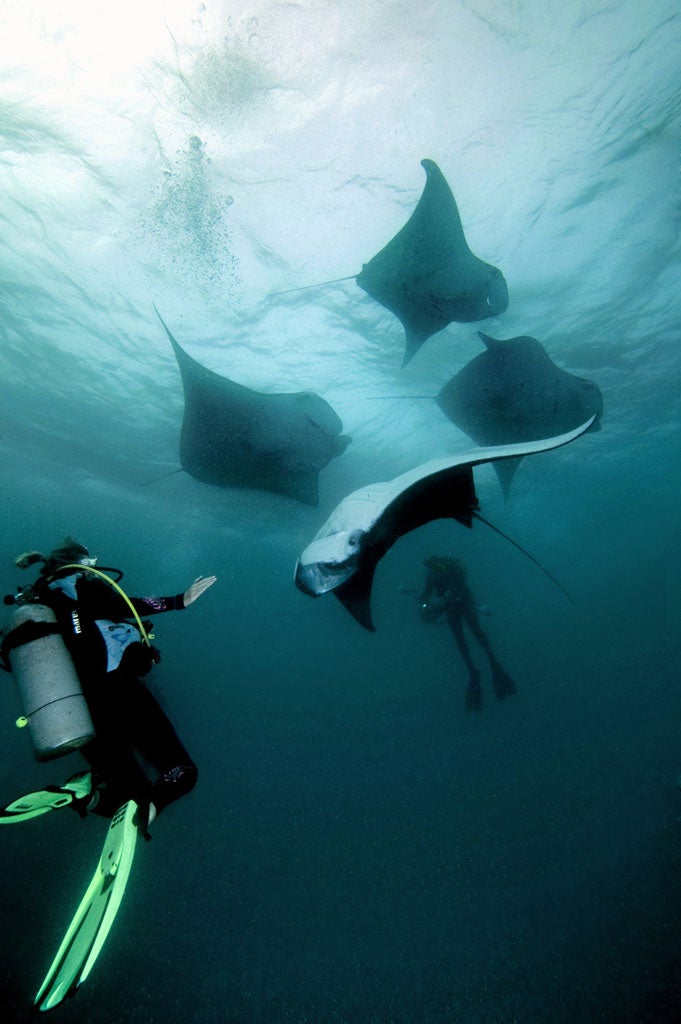On The Road: Swimming with mantas in the Maldives
'One manta ray performs a perfect belly roll inches from my face'

Your support helps us to tell the story
From reproductive rights to climate change to Big Tech, The Independent is on the ground when the story is developing. Whether it's investigating the financials of Elon Musk's pro-Trump PAC or producing our latest documentary, 'The A Word', which shines a light on the American women fighting for reproductive rights, we know how important it is to parse out the facts from the messaging.
At such a critical moment in US history, we need reporters on the ground. Your donation allows us to keep sending journalists to speak to both sides of the story.
The Independent is trusted by Americans across the entire political spectrum. And unlike many other quality news outlets, we choose not to lock Americans out of our reporting and analysis with paywalls. We believe quality journalism should be available to everyone, paid for by those who can afford it.
Your support makes all the difference.I've just sailed into mirror-smooth Hanifaru Lagoon in the Maldives where, so they say, manta rays come to feed en masse. It's a rare event and little understood. Sometimes the mantas are there, sometimes not, but today it seems like they are waiting for me. I see one flapping idly over the sandy bottom; another hovers near the drop off. There's a wing flap in that direction, a dark ripple in the other.
Next thing I know, I'm sitting on the sand at 10m deep with my head spinning. Left, right, left. Up, down. If it was to turn any more, I swear it would go a full 360 degrees. There must be more than 50 mantas but I can't count them because my neck isn't built to turn that far. One swims right up to me and performs a perfect belly roll inches from my face. Never, in the 20 or so years I have been scuba diving, have I seen such a thing.
Manta after manta arrives, swimming to and fro, approaching divers and snorkellers, showing off, flapping away again. By the time I run out of air, I have seen hundreds of these gentle giants and my adrenalin level is at explosion point.
The whys and wherefores have not been investigated but it's thought the lagoon captures substantial amounts of plankton when the tides, moon phase and currents are just right. The sea turns dark with microscopic critters, which in turn attract the manta rays.
As I ascend, my excitement is tempered by knowing these animals are also at risk. Despite being a marine protected zone, human and boat activity in the lagoon is not managed and there are fears that the mantas may be injured by the overwhelming numbers of people who want to see them. I was one of them and I would go again, hoping animals are still treated with respect.
My attention is diverted as a tantalising shadow suddenly transforms into a manta right beside me.
Footprint's 'Diving the World" and "Diving Southeast Asia', by Beth and Shaun Tierney, are out now (£19.99)
Join our commenting forum
Join thought-provoking conversations, follow other Independent readers and see their replies
Comments